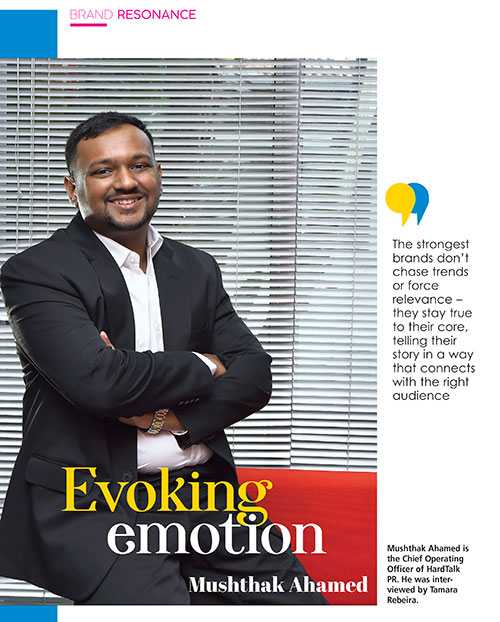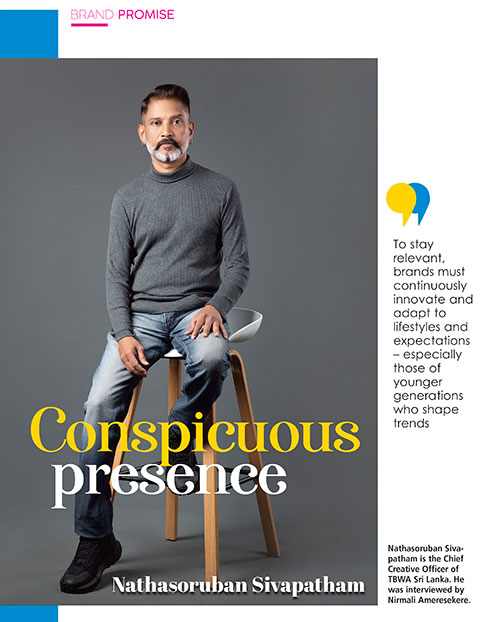EMPIRICAL TRUTHS
BRAND IDENTITY
Varuni Amunugama Fernando

What is your approach to crafting brand identity?
Crafting a brand identity begins by answering one question: “What’s the human problem we want to solve?” Brands exist to solve human problems, and the role of branding and creating a brand identity is to craft the best impression of solving a particular human problem – better than others.
There’s a reason why soaps with the same price have very different market shares. Soap brands portray different goals for consumers, from nourishing, cleaning, disinfecting and re-energising to relaxing (aromatherapy).
Understanding this principle underpins why during the COVID-19 pandemic, soaps that incorporated disinfection strongly into their identities saw temporary market leadership status; and it is why today, the same status has been lost to more nourishing soaps.
Market share is simply a reflection of mass preference. So crafting a brand identity is about understanding which goal or problem we want to solve for customers, and aligning all brand assets to echo the solution.
And what fundamental principles do you believe are essential to a brand’s success and longevity? How do you apply them to create a cohesive brand experience?
Brand salience refers to the awareness of a brand in consumers’ minds. Through distinctive brand assets – such as logos, colours, signature tunes, slogans and more – brands can easily become recognisable and memorable, which leads to customers recalling the brand in purchase decisions, resulting in a higher likelihood of adoption.
Successful brands achieve growth by expanding their customer base and increasing market penetration. This can be achieved by understanding buying occasions in which the brand should strive to be part of the preference set.
A brand’s success and longevity is also determined by growing its customer segments – i.e. reaching a broad audience rather than focussing exclusively on niche segments. In reality, the majority of a brand’s sales typically come from newly acquired customers, making constant acquisition crucial for success and longevity.
What strategies do you employ to cultivate brand loyalty and nurture long-term relationships with consumers in the digital realm?
Firstly, the notion of loyalty and fostering long-term relationships has been heavily contested, and proven to be false through much empirical research – regardless of the channel being digital or not.
Statements such as the 80:20 rule – 80 percent of revenue coming from 20 percent of customers – and ‘it costs five times more to secure a new customer than retain an existing one’ – were debunked over a decade ago through empirical research. Loyalty, brand penetration and light buyers driving growth are a few empirical truths.
Contrary to popular belief, true brand loyalty – defined as exclusive and frequent purchasing behaviour – is relatively rare. Instead, most consumers exhibit a low level of loyalty to brands; they tend to switch between different brands within a category – think of the toothpaste and soap we use.
Brand penetration refers to the share of households or consumers that buy a brand within a specific period. Increasing brand penetration is more critical for growth than focussing on strengthening loyalty among existing customers since we don’t consume more of anything simply because we’re loyal.
One person buying a bar of soap a month translates into 12 bars a year. Five people buying a bar of soap every other month means 30 bars a year – so penetration matters more than loyalty.
A brand’s growth is primarily driven by its ability to attract and retain a large number of light and medium buyers rather than relying solely on a small group of highly loyal heavy buyers.
Therefore, targeting a broad audience and expanding a brand’s reach is crucial for sustained growth.





